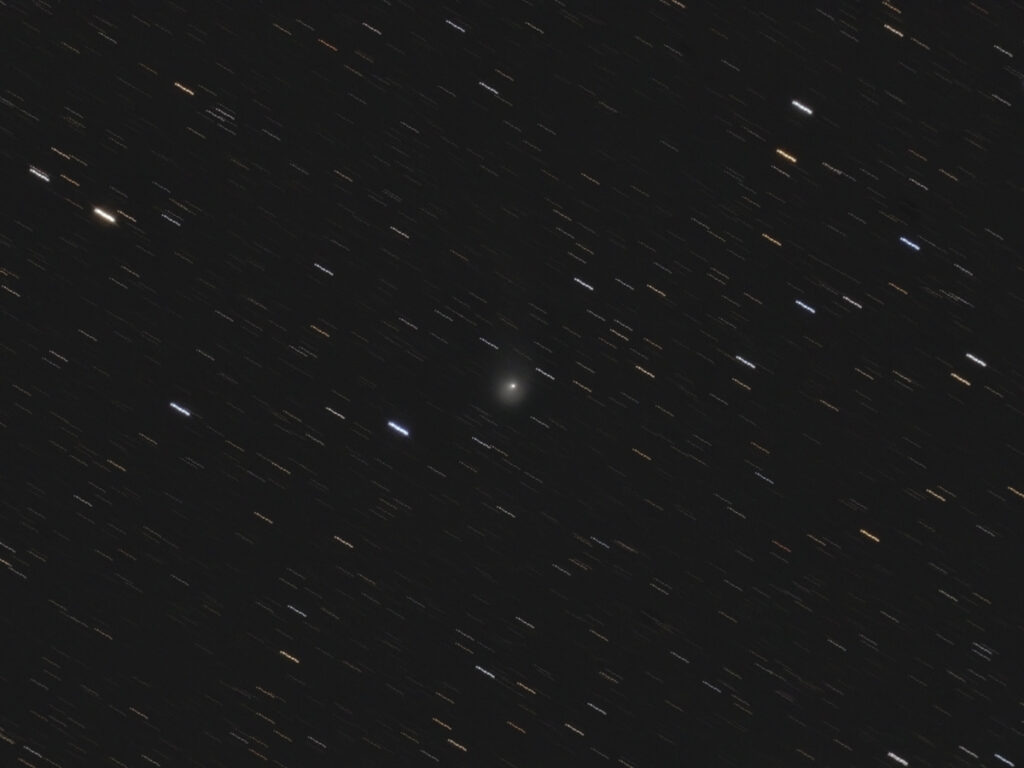
Telescope: Astro-Tech 8” f/8 Ritchey-Chretien, Orion Atlas EQ-G
Camera: Full Spectrum Modified Nikon D810, Baader Mk III MPCC
Filter: GSO IR Blocking Filter
Guide scope: Astro-Tech 60mm, ZWO ASI120MM mini, PHD2
Exposure: 12x120sec, ISO 200, saved as RAW
Darks: Internal (Long Exposure Noise Reduction On)
Flats: 32×1/50sec, Tee shirt flats taken at dusk
Average Light Pollution: Red zone, Bortle 8, good transparency
Lensed Sky Quality Meter: 18.8
Stacking: Average
White Balance: Nebulosity Automatic
Software: Backyard Nikon, Nebulosity, Photoshop
Comet C/2017 K2 (PanSTARRS) is a relatively small, faint comet that is slowly crossing southwards across Ophiuchus in the evening sky. As comets go, this comet is visually challenging, though is may be glimpsed in a small telescope as a faint star-like core with a diffuse coma. Physically, this is an amazing comet. It was discovered in May of 2017 when it was in the outer solar system between the orbits of Saturn and Uranus and approaching from deep space well above of the plane of the planets. Comet 2017 K2 is likely a visitor from the Oort Cloud making its one and only pass through the inner solar system before departing for interstellar space, never to return. So, while it may be challenging to locate, it’s a fascinating object to track down.
C/2017 K2 (PanSTARRS) is currently well placed in the eastern sky at dusk. Although it will remain relatively faint, it will remain visible from the northern hemisphere until August as it flows southwards across Ophiuchus and Scorpius. It will be closest to the Earth (167 million miles) while still inbound to the sun on July 17th, and it will be closest to the sun (about as far as the orbit of Mars) on December 19th while it will be visible only from the southern hemisphere.
Recent Comments